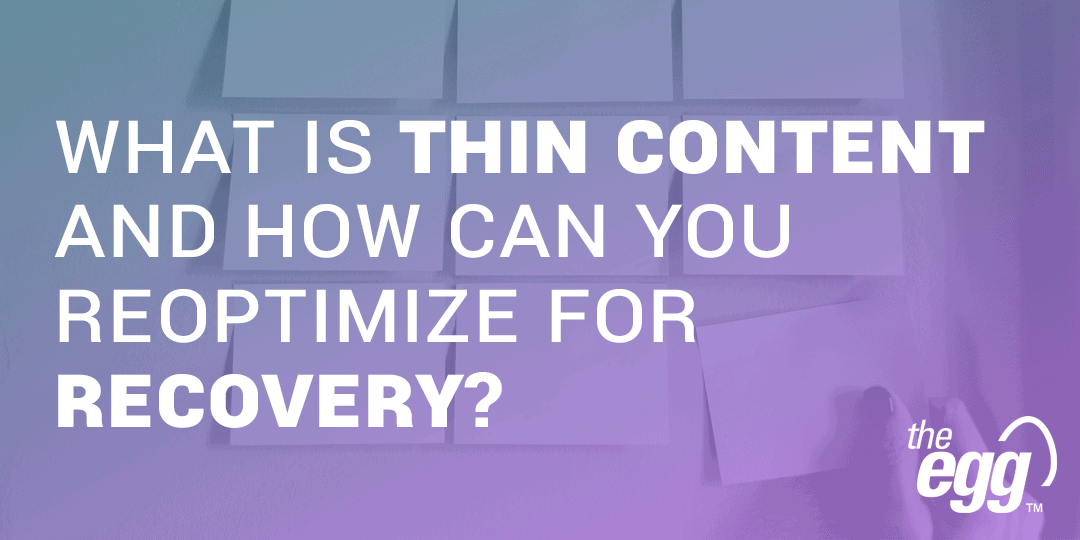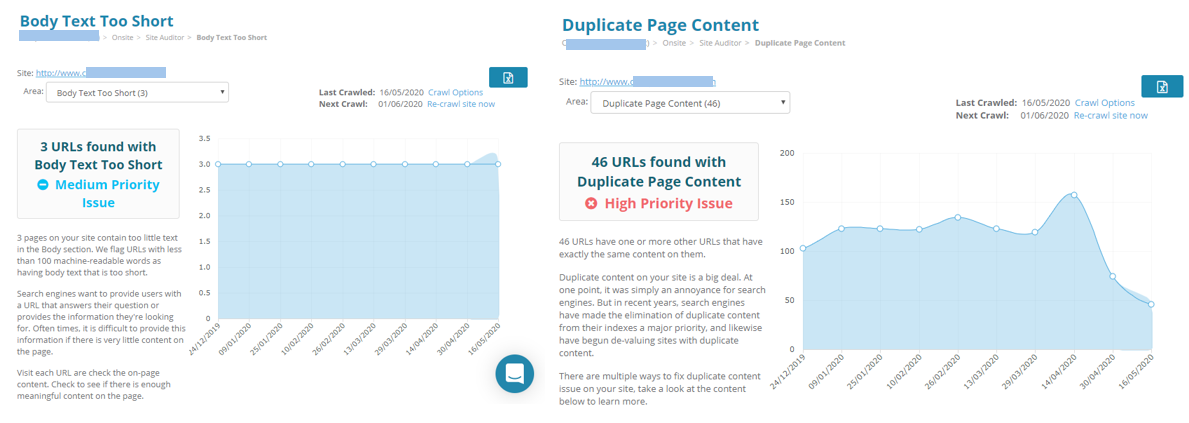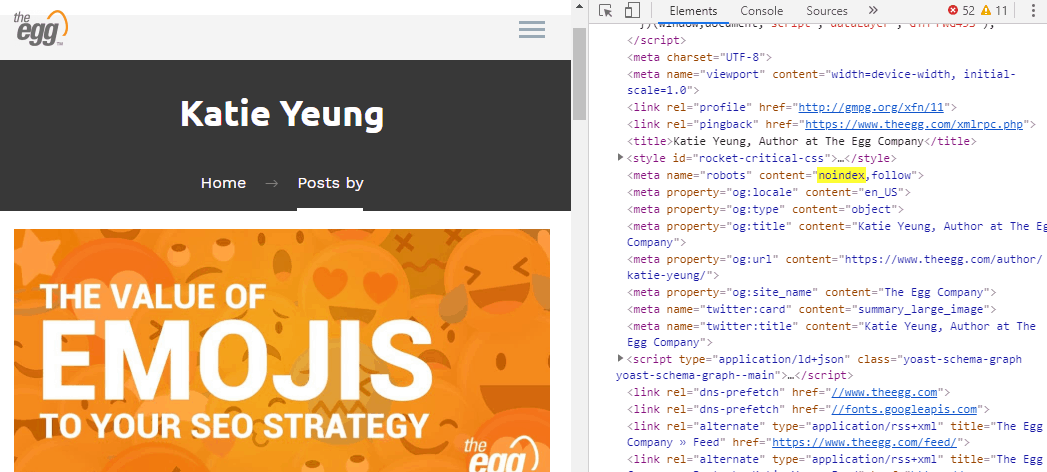On May 19, 2020, Google announced on Twitter the completion of its May 2020 core update rollout.
As digital marketers, we know that it’s critical to monitor how search habits are changing through COVID-19 and as economies are reopening and recovering. This first Google core update since the outbreak is key to helping us do that.
We can already see some preliminary data on sites affected by the update. More than one report shows that sites containing thin content are dropping in rankings.
Thin content has long been an SEO issue that Google has targeted (in fact, since the Panda algorithm update in 2011). Although some thin content pages are able to maintain good ranking on the SERP with the support of internal linking or other external factors, this seems to be less promising after the 2020 May core update.
Even if your site is not affected by the update, this is a signal to deal with thin content pages sooner rather than later. And it’s a quick SEO win to help your brand through recovery.
Here, we discuss thin content: what it is, how to identify it, and how to fix it.
What is thin content?
When we say “thin content” in SEO, it’s not just about pages that contain little content and/or low word counts. Google defines thin content more broadly to pages that have little or no value, including duplicate, low quality, and shallow pages.
Given Google’s definition, here are some thin content examples and where you can find them most often:
- Blog pages with shallow content that is not valuable to users
- Pages that contain copied content from other sites
- Pages with similar content
- Affiliate pages with many ads but no added value
- Duplicate pages due to technical issues
- Product category pages/author pages with few listings
- Photo/video galleries
- In-site search result pages/shopping cart pages
- Auto-generated content, such as publishing translated content solely by an automated tool
- Doorway pages used to target specific keywords and redirect users to other affiliate pages
How do I identify thin content pages?
Sometimes it’s not easy to identify thin content as it may look fine from a human perspective. However, the search engine ranking algorithm may see it in another way.
There are several online tools you can use that include thin content and duplicate page analysis in their site audit. For example, on Dragon Metrics, you can obtain a list of URLs with the aforementioned issues and monitor whether the issue is resolved from the dashboard.
You can also use Screaming Frog to crawl all your indexed URLs and then filter out pages that contain low word counts and/or similar or duplicate metadata/URL structures to help analyze whether those pages contain thin content.
To identify shallow content, you can go to Google Analytics and look for pages that have a high bounce rate. A high bounce rate usually means the content does not satisfy user intent. Then, you can add more in-depth content to the high-bounce-rate pages.
If you are aiming to not just solve thin content but further improve content quality, an in-depth content audit is suggested. That’s a topic we’ll cover in another blog article, so stay tuned!
How do I fix thin content pages?
After identifying thin content pages on your site, you can classify those pages into different categories:
Thin Content Pages with Search Demand
It’s no surprise that you’d want to keep and optimize pages with search demand to gain more traffic. You can improve content quality and provide relevant content that users are looking for.
This can be done by removing scraped content, enriching, and re-writing some unique and relevant content and optimizing with related keywords. You may also refer to the questions listed by Google after the core updates in 2019 to evaluate your content.
Thin Content Pages with Little-to-No Search Demand
For thin content pages that are not designed to fulfil search intent but rather are essential to your site, for example, shopping cart pages or internal search results pages, you can simply set “noindex” to those pages.
The “noindex” strategy can also apply to category or author pages that have less original content and drive less organic traffic but still hold relevant internal linking.
Here is an example of my author page with a “noindex”:
And for low-quality content pages that may no longer be worthy to reoptimize or are nonessential to the site, you can just simply remove the entire page. Make sure you also redirect all the internal links that pointed to these pages to prevent 404 issues.
Similar/Duplicate Pages
Duplicate content issues can be caused by many different factors. Firstly, you should ensure it is not caused by a technical mistake by checking hreflang tag implementation for different language versions and/or 301 redirects for HTTP and HTTPS, etc.
For other duplicate pages, you can let the search engines know the desired landing page via canonical tags. You can also either reoptimize to create 2 unique pages or remove the page with less traffic.
***
We can see that thin content is not just about low word count but can include other content and technical issues. No matter what core updates come from Google, the importance of providing high quality and relevant content that fulfils search intent is always addressed. This is particularly critical as brands have catapulted online for recovery opportunities.









